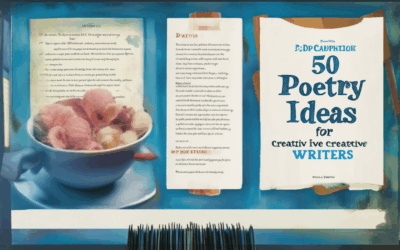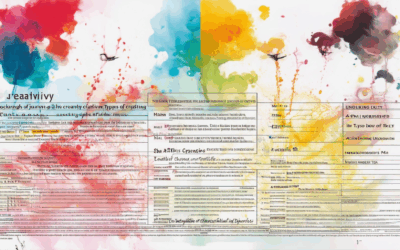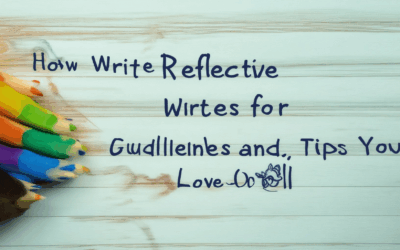Unlock your creative potential and embark on a journey to discover unique poem topics and poetry ideas that cater to every writing style. Whether you’re a seasoned poet or just beginning, finding the right poetry ideas can transform your approach and ignite your imagination. From short poetry ideas to deep themes, this guide offers a wealth of inspiration to help you craft meaningful and memorable works. Explore techniques, tips, and activities designed to enhance your creativity, while delving into topics that challenge and engage your mind. With a diverse range of poetry ideas, you’ll find everything you need to unlock your creative potential and write poetry that truly resonates with your unique voice.
Key Takeaways
– Explore diverse themes like nature, love, or imaginary worlds to unlock your creative potential.
– Connect emotionally and personally to resonate with readers and add depth to your work.
– Use vivid imagery, metaphors, and personification to captivate readers from the first line.
– Delve into cultural, historical, or seasonal themes to add layers to your poetry.
– Reflect on human connections to explore love, loss, or friendship in your poetry.
– Dive into abstract ideas like time or existence for thought-provoking poetry.
– Start with personal experiences and emotions to fuel authentic expression.
– Craft openings that hook with questions, metaphors, or unique perspectives to keep readers intrigued.
– Balance rhythm and flow with a purposeful opening to set the tone effectively.
– Join communities like Silken Drum for ongoing inspiration and support.

What Makes Good Poetry in Creative Writing?
Good poetry in creative writing is defined by its ability to evoke emotion, inspire thought, and connect deeply with readers. Here are the key elements that distinguish exceptional poetry:
- Imagery and Metaphor : Rich imagery paints vivid pictures in the reader’s mind, while metaphors bridge abstract concepts to concrete experiences, making complex emotions accessible.
- Rhyme, Rhythm, and Meter : These structural elements create flow and musicality, enhancing readability and emotional impact. Consistency in rhythm adds to the poem’s rhythmical appeal.
- Depth and Layers : Great poetry explores themes like love, loss, identity, or existence, offering insights that resonate long after the poem is finished.
- Originality and Voice : A unique perspective and fresh language set poetry apart. Authenticity in expression allows writers to connect genuinely with their audience.
- Clarity and Precision : Clear language ensures the reader understands the poet’s intent, while precision enhances the emotional weight of the words.
silken drum encourages writers to embrace these elements, fostering creativity and self-expression. Explore our platform to discover inspiration and connect with fellow writers who share your passion for poetry and creative writing.
How to Make a Creative Poem
Writing a creative poem starts with unlocking your imagination and following these steps to bring your ideas to life:
Tips for Getting Started
- Start Small: Begin with a simple theme or image that inspires you. A single line can grow into a full poem.
- Use Sensory Details: Describe what you see, hear, smell, taste, or feel. Vivid imagery makes poems memorable.
- Experiment with Forms: Try haiku, free verse, or rhyme schemes to explore different styles.
- Set a Routine: Dedicate a specific time each day to write, even if just for five minutes. Consistency helps creativity flow.
Expanding Your Ideas
Once you have a theme, branch out with words, metaphors, or symbols that relate to it. For example:
🌸 Imagine standing under a cherry blossom tree. What colors, scents, and sounds surround you? How does the breeze feel?
🎶 Think about the rhythm of a song or the beat of a drum. How can you translate that into words?
Daily Writing Habits
Creating a daily writing habit can transform your approach to poetry. Here’s how to stay motivated:
- Keep a Journal: Document your thoughts and observations. Over time, you’ll find patterns and inspiration.
- Explore New Places: Visit unfamiliar locations or try new activities to spark fresh ideas.
- Engage with Poetry: Read works by established poets to learn techniques and inspire your own style.
Reading and Inspiration
Great poetry often reflects the world around us. Read diverse authors and styles to expand your perspective. Explore platforms like Silken Drum for reflective and imaginative content.
Revising and Sharing
Don’t hesitate to edit your work. Remove lines that don’t contribute or strengthen your message. Share your poetry with friends or online communities to gain feedback and grow.
Additional Resources
- Learn from Masters: Study poets like Rumi, Mary Oliver, or Pablo Neruda to understand different poetic styles.
- Join Communities: Engage with groups like Poetica or The Writer’s Block to connect with fellow creatives.
- Attend Workshops: Consider joining writing workshops or festivals to learn advanced techniques and network with others.
Conclusion
Creative poetry is a journey of self-expression and discovery. By exploring your surroundings, experimenting with forms, and staying consistent, you can craft meaningful and impactful pieces. Remember, every great poem begins with a single thought or image. Happy writing!

What is Creativity in a Poem?
Creativity in a poem is the essence of bringing unique and imaginative ideas to life through verse. It involves the ability to see the world differently, explore unconventional perspectives, and craft meaningful expressions that resonate with readers.
At its core, poetic creativity is about originality, innovation, and uniqueness. A poem is not merely a collection of words but a carefully curated mosaic of imagery, emotion, and narrative that invites interpretation and connection. Creativity in poetry allows the writer to transcend conventional structures and explore uncharted territories, offering fresh insights into human experiences and the world around us.
One of the hallmark traits of poetic creativity is the willingness to experiment. Poets often push boundaries by using unexpected metaphors, unconventional rhythms, or non-traditional forms. This experimentation leads to works that stand out, challenging readers to see familiar concepts in new ways. For instance, a poem might reimagine a classic tale or present a universal theme through a singular, vivid lens.
Moreover, creativity in poetry is deeply personal. Each poet brings their unique perspective, cultural background, and emotional depth to their work. This individuality ensures that no two poems are truly alike, even if they tackle similar themes. The process of crafting a poem is akin to building a puzzle, where every word and image contributes to a larger, cohesive vision.
Silken Drum celebrates this unique art form by providing a platform for writers to share their creations and inspire others. Our community thrives on the diversity of voices and styles, fostering an environment where creativity knows no bounds. Whether you’re experimenting with free verse or traditional forms, the act of writing poetry is a journey of self-discovery and artistic expression.

What is a Good Poem Idea?
A good poem idea begins with a spark of inspiration and evolves into a meaningful narrative. Whether you’re writing about personal experiences, emotions, or abstract concepts, the key is to choose a theme or subject that resonates with you and your audience. Here are some thought-provoking ideas to get you started:
- Nature and Seasons : Explore the beauty of nature through its cycles – the blooming of flowers, the changing colors of autumn, or the silent snow of winter. Consider how natural elements like water, wind, or light inspire emotions.
- Celestial Bodies : The stars, moon, or constellations can serve as a metaphor for life’s journey. Write about the wonder of the night sky and its connection to human experiences.
- Everyday Objects : Find beauty in ordinary things like a teacup, a book, or a windowpane. These objects can carry hidden stories or evoke vivid memories.
- Personal Growth : Reflect on your journey through life – challenges overcome, lessons learned, or moments of self-discovery. Turn these experiences into a poetic reflection.
- Love and Relationships : Express feelings of love, heartbreak, or gratitude through the lens of personal relationships. Use metaphors to bring these emotions to life.
- Imaginary Worlds : Create a fantastical world where strange creatures, magical places, or alternate realities exist. This allows for endless creative possibilities.
- Seasonal Moments : Focus on specific moments tied to a season – the warmth of summer nights, the crisp air of fall, or the quiet solitude of winter.
- Emotions and Thoughts : Dive into complex emotions like joy, sorrow, or confusion. Use poetry to explore how these feelings shape your perspective on life.
- Historical Events : Re-examine significant historical events through a poetic lens, offering a fresh perspective on their impact and meaning.
To make your poem stand out, consider incorporating sensory details and imagery. Describe how things look, sound, feel, taste, or smell to create a vivid scene. Additionally, experiment with different poetic forms like haiku, sonnet, or free verse to add uniqueness to your piece.
Remember, the best poem ideas often come from a place of genuine emotion and personal connection. Keep a journal or notebook handy to jot down thoughts and observations that might later inspire your writing.
Explore more poetry ideas and resources on Silken Drum to discover creative inspiration and tips for writers.
How to Pick a Topic for a Poem
Poetry is a deeply personal art form, and choosing the right topic can feel overwhelming at first. However, narrowing down your ideas can lead to a more focused and meaningful piece. Here’s how to approach finding the perfect topic for your poem:
- Start with Personal Experiences:** Your own life is a rich source of inspiration. Consider moments that stood out to you—whether it’s a childhood memory, a recent life change, or a recurring emotion.
- Explore Emotions:** Poetry often deals with feelings. Think about what you want to convey—love, loss, anger, joy, or longing—and let that emotion guide your topic.
- Visualize Imagery:** A strong poem relies on vivid imagery. Choose a topic that allows you to paint a clear picture in the reader’s mind, whether it’s a place, an object, or a feeling.
- Cultural or Historical Context:** Research a historical event, cultural tradition, or myth that resonates with you. These can provide deeper layers to your poem.
- Seasons and Nature:** Many poets find inspiration in the changing seasons or natural elements. Consider how a specific time of year or natural phenomenon can inspire your words.
- Human Relationships:** Themes of love, friendship, or conflict can be powerful. Reflect on a relationship that has impacted you deeply.
- Historical Figures or Events:** Dive into the lives of famous figures or significant historical events. Their stories can offer universal truths or unique perspectives.
- Abstract Concepts:** Sometimes the best topics are intangible—like time, existence, or the human condition. These can lead to profound and thought-provoking poems.
Once you’ve settled on a topic, spend time brainstorming specific details or symbols that can bring your vision to life. Remember, the best poems often emerge from a deep connection to the subject matter. Whether you’re writing about Silken Drum or something entirely different, let your passion and curiosity guide you to create something truly special.
Ready to explore more? Visit Silken Drum to discover a community of like-minded writers and find endless inspiration!

How to Start Off a Poem
To craft an engaging opening for your poem, consider the following steps:
- Set the Scene or Mood:** Begin by establishing the atmosphere or emotion of your poem. Use descriptive language to evoke a specific feeling, whether it’s joy, sadness, mystery, or serenity.
- Use Vivid Imagery:** Paint a mental picture with sensory details. Describe sights, sounds, smells, or textures to immerse the reader in your world.
- Employ Metaphors and Similes:** Connect abstract ideas to concrete images. For example, “Time is a thief stealing moments” instead of simply stating “Time passes.”
- Hook the Reader Early:** Start with a striking statement or question that piques curiosity. A strong opening line can draw readers in and make them eager to continue.
- Practice Personification:** Give non-living things human qualities to bring them to life. For instance, “The wind whispers secrets to the trees.”
- Consider Rhythm and Flow:** Choose an opening line that flows well and matches the poem’s meter or rhyme scheme.
- Take a Unique Perspective:** Approach familiar subjects from an unexpected angle. For example, “The spoon rests on the table like a fallen soldier.”
- Tailor to Your Purpose:** Adjust your opening based on the type of poem—narrative, lyrical, or reflective. Focus on the themes or emotions you wish to convey.
By combining these elements, you can create a compelling opening that invites readers to explore your poem further.




0 Comments